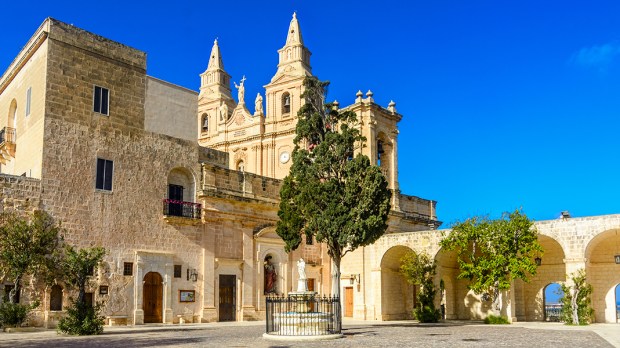Information compiled by Jean Pierre Fava, from the Malta Tourism Authority.
In a previous article, I had referred to the Mellieħa Marian National Shrine and its ancient Madonna icon. Today I shall give a few more details of the Madonna and Child. We shall have a glimpse of its millennial history which leaves no doubt that Marian devotion in Malta goes back to the beginning of the Christian era. Our Lady of Mellieħa has a long history shrouded in mystery and tradition. One of the oldest traditions is that St. Paul’s companion, the Evangelist Luke, painted the fresco during his sojourn in Malta way back in AD 60. Another tradition confirms this and relates that in 409, a number of Catholic bishops visited the hallowed Grotto and consecrated it as a church. However, the present Icon is of late Siculo-Byzantine origins. Probably it was painted during the 13th century. In the following centuries the devotion to the icon increased greatly.
Pilgrims from every corner of the Christian lands of the Mediterranean and from all walks of life arrived to pray at the Sanctuary of the Nativity of the Blessed Virgin.Here they asked for special graces, sometimes miracles, through the intercession of Our Lady, as the many ex voto donations exhibited in the sacristy witness.
During his Apostolic visit, exactly 30 years ago, even Pope St. John Paul II himself prayed devoutly before the Madonna and Child. Yes, 30 years ago today, on May 26, 1990, this great saint visited Malta and the belovedMellieħaMarian Shrine! It is also amazing that Monday, May 18, just a week ago, was his 100th birthday! When he visited Malta he had just turned 70.
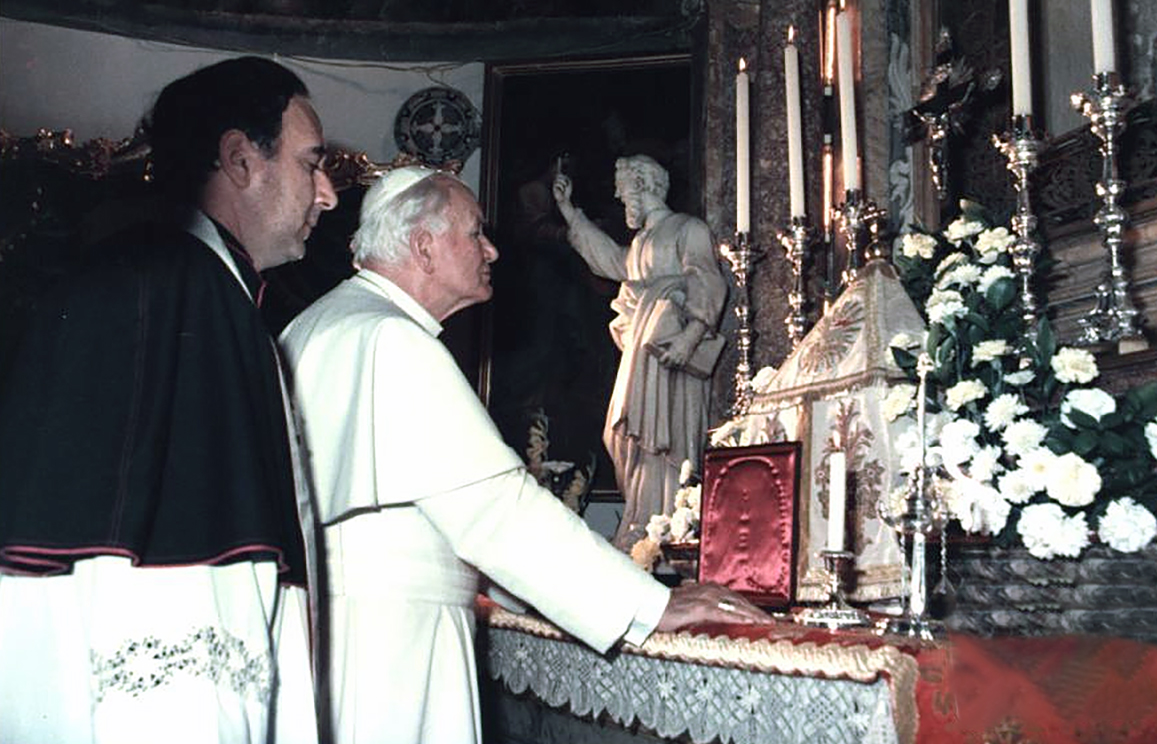
The painting’s iconography reflects the Council of Ephesus’ (431) definition of Mary as the Theotokos (God bearer). She carries Jesus in Her arms. The tradition of St. Luke being the painter is based on another tradition that the Evangelist had painted Mary in Jerusalem, an icon that was taken to Constantinople during the 5th century. This icon is widely copied and it has become one of the most common images of Our Lady. Yet another tradition identifies Luke’s painting with the Salus Populi Romani in Santa Maria Maggiore. A very recent conservation and restoration project, began in 2013, found it badly damaged due to underground dampness and inhospitable environment. Serving as a sanctuary for centuries takes a heavy toll on all works of art. However, painstaking and elaborate care and professional restoration works gave us back this priceless treasure.
Thanks to this work, amazing secrets of the holy icon came to light: the inscription on the left and the right, MAT DEI, an abbreviation for “Mother of God”; a flower or star on the Madonna’s forehead representing her eternal virginity. Other interesting features are details of the two halos, such as pearls, standing for light and brightness, and traces of dark color on the Infant’s halo, which when connected form a cross within it. This symbol is found in many Byzantine representations of Christ. The original color of the Madonna’s veil was a strong reddish hue — the imperial color, in fact known as “imperial purple,” the symbol of royalty. It is a typically Byzantine tradition, Mary in all Her Majesty. The restoration work revealed that the artist wanted to send a message about the Hodegetria Virgin (She who shows the Way). Mary points to the Child as the path to Salvation.
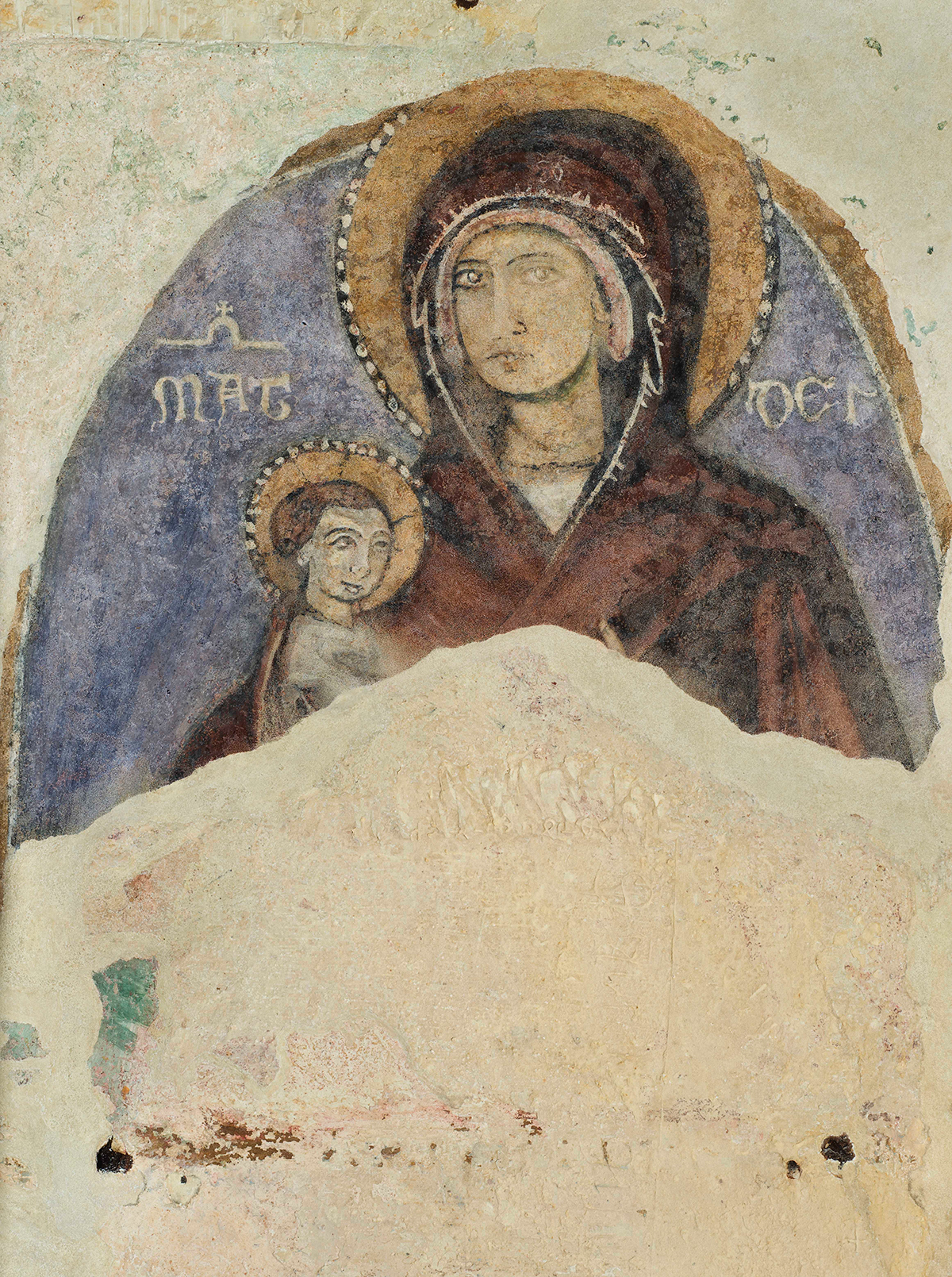
The following paragraph sums up the series of events and happenings the Grotto and painting experienced, which also shed light on how through time the icon suffered extensive alterations due to raids, unfavorable environmental conditions, and restoration interventions that were supposed to compensate for the losses in the image. I feel that Valentina Lupo and Maria Grazia Zenzani, who restored for posterity the holy icon, deserve our gratitude.
Three significant pastoral visits to the Mellieħa Sanctuary were those of Bishop Senatore De Mello in 1436, when it was classified as one of the 10 parishes of Malta; Bishop Dusina in 1575; and that of Bishop Tommaso Gargallo in 1587, when he found that the holy icon was badly damaged. He decided to appoint the Augustinian Friars to cover it with a new icon. However, in 1600, the parish was suppressed due to frequent marauding raids by Muslim corsairs. In fact, in 1614, the Sanctuary was brutally vandalized during such a raid by Barbary pirates. The lower parts of the paintings were severely damaged. Before 1644, devotees of the Blessed Virgin funded the restoration of the icon and covered it with a layer of silver riza, leaving visible the faces of Mother and Child.
In spite of the danger and hardship involved in visiting the sanctuary in those troubled times, the devotion towards Our Lady never stopped, and in fact pilgrimages and pilgrims visited frequently. Our Lady was asked for her protection even in moments of national crises, for example in times of contagious diseases, dangers of invasion and drought, as witness the triumphal arch built in 1719 at the entrance of the sanctuary courtyard. In 1882, the Sanctuary was visited by Charles Cardinal Lavigerie. Records show that His Eminence found the icon in a very poor state, colors faded out and faces unrecognizable. In 1899, it was decided to cover the fresco with a painting on canvas showing Our Lady. This painting was executed by the 18th-century artist Favray. In 1972, during restoration work on the ceiling of the Sanctuary, Samuel Bugeja, artist and restorer, had an intuition that there might be another painting behind the icon. He asked Archbishop Michael Gonzi’s permission to remove the plaster layer. Thanks to Bugeja’s insight, one of a number of overlaying images of Our Lady was discovered. This paved the way for the discovery of the original icon during the 2013 restoration, so that itis today once again restored to posterity. It was brought back to light after laying buried for 400 years.
Presently, the Sanctuary of the Holy Icon is one of 20 National Marian Shrines which form the EuropeanMarianNetwork. Also, the Mellieħa Madonna Shrine is a member of the Association Mary,MotherofEurope. In 2015, the Maltese Episcopal Conference established it as the National Shrine of Our Lady for the diocese of Malta.
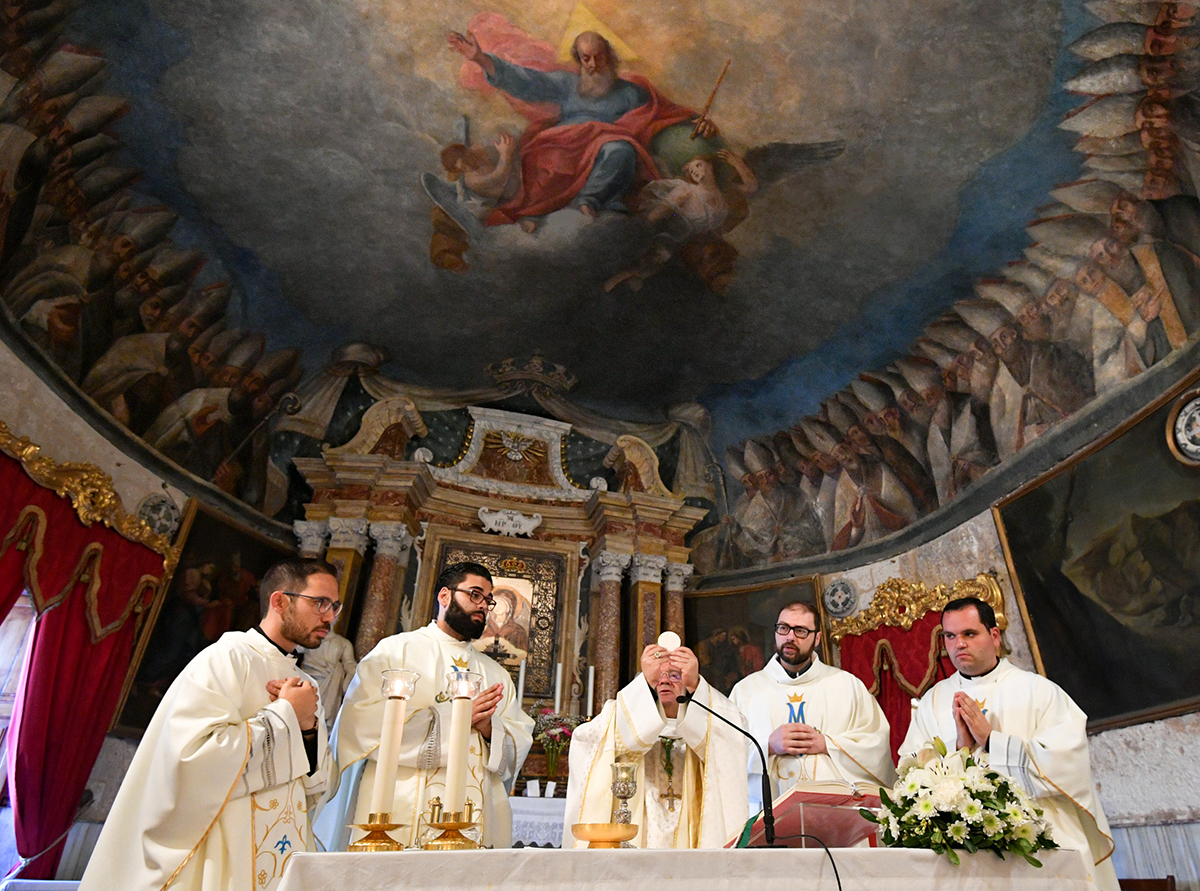
The Madonna of the Grotto of Mellieħa
The underground grotto of the venerated Madonna forms part of the complex of the Sanctuary of Our Lady of Mellieħa, and consists of a chapel hewn out the hard, brownish limestone – a dream come true of just one man, a Sicilian devotee of Our Lady who was a regular visitor to the Sanctuary of the Madonna of Mellieħa. To fulfil his life-long wish, he later erected a white statue of Our Lady holding the Holy Infant on her left arm at the far end of the chapel.
Mario de Vasi, a wine merchant from Catania, used to visit our island frequently because of his business. He was such a devout votary of the Sanctuary that he wanted to create another smaller Shrine in Her honor on the same site. Indeed, it is located across the main street from the Church of Our Lady of Victory, adjacent to the Sanctuary of the Madonna of Mellieħa. In 1644, de Vasi paid for a small sacristy to be hewn out of the rock behind the Sanctuary of the Holy Icon. Others maintain that he also paid for a new painting or for the restoration of the fresco on the ceiling, showing God the Father surrounded by a number of bishops, who according to tradition had consecrated the church in the 5th century.
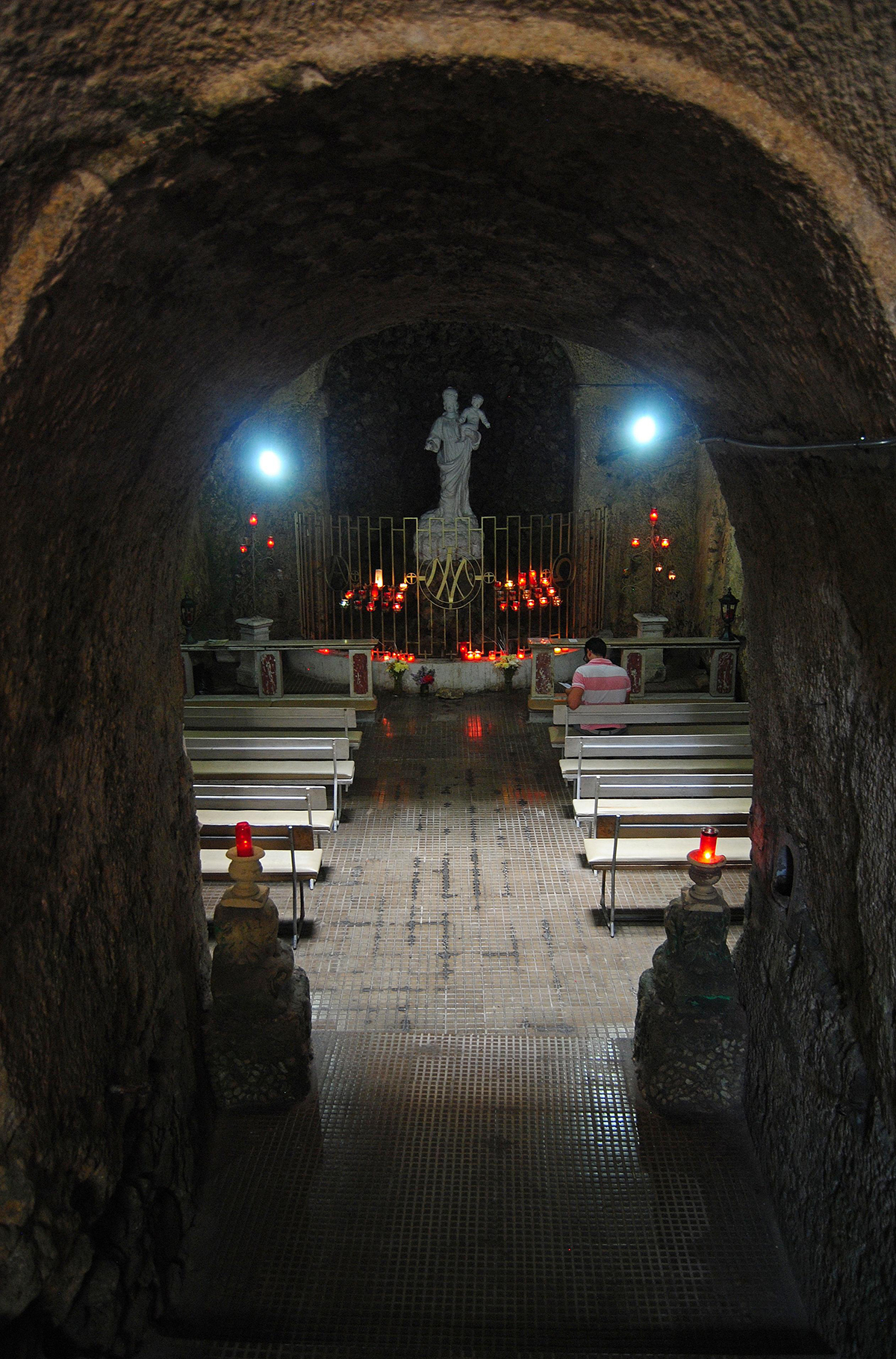
Notarial deeds show us details of a contract signed on Sunday, February 21, 1644 between de Vasi and two master stone masons, who had to carry various works, including access to the underground crypt close to the Sanctuary. The style, measurements and number of the steps were written down in detail. The chapel was hewn out as agreed. Underground galleries were also dug to find running water, which was then rerouted in order to run at the feet of the statue of Our Lady. It soon became known as the Madonna of the Grotto among the scattered communities of farmers tilling the fertile valleys. On Sunday July 6, 1617, the farming communities fell victim to marauding raid by North African pirates. The Muslim raiders were looking for booty. They also attacked the Sanctuary. In spite of the brave resistance of the rector, aided by a number of farmers, the holy icon suffered severe damage. Three stone statues, two of Our Lady and one of St. Joseph, were beheaded and were abandoned in the crypt as grim reminders of a vicious raid.
Ancient places of worship in Malta and others scattered on the Christian littoral of the Mediterranean have their origins embellished by various legends. The Chapel of the Grotto is no exception. Here we have time to refer to three popular legends. The first is in the form of a quiz, asking the visitors to count the steps when they are going down and then, to do so again when going up. They tell your totals will never match. The steps are constructed in such a way that you have to be on your guard. If someday you visit the Shrine, try to solve the riddle! Another legend narrates: “The white stone Statue of Our Lady with Baby Jesus was taken up to the Sanctuary on three occasions and each time it was found back in its original place in the Grotto.” They never moved the statue again. The third legend relates how “For some reason or other, a number of young ladies wandered inside the galleries of spring-water and they disappeared without a trace.”
However, one thing is sure. “Over the years thousands of pilgrims visited the underground Shrine and prayed before the Madonna, attributing to her many miraculous interventions and healings, spiritual and temporal.” Of special note were events recorded in 1887, 1888 and 1948. Various groups of people on different dates and time were gathered to pray and beheld the white statue of Our Lady repeatedly moving her right hand, making the Sign of the Cross. In the Sanctuary Archives there are 13 separate documents that record these happenings. All give a very detailed description of each occurrence and are signed under oath by all those present. The first happening took place on August 2, 1887, when Sergeant-Major Vittorio Gauci declared that Our Lady moved her arm up and down on three different times on the same day. A similar happening was witnessed on August 13 by 10 different people, including the Mellieħa parish priest Fr. Franscesco Magri. Other such happenings were witnessed and declared under oath by priests and laymen alike. They spread like wildfire all over the island and on November 20, 1887, Bishop Fra Antonio Buhagiar, together with the clergy and a great multitude of pilgrims, visited the Grotto and sung the TeDeum.
During a visit to the Madonna of the Grotto on March 20, 1893, Fr John M’hale S.J., and another Jesuit took 50 teenagers on an expedition to Mellieħa. They saw “Our Lady’s right hand moving slowly. Then Baby Jesus made the same movements. They blessed the entire group by making the Sign of the Cross. Jesus’ head moved gracefully whilst the expression on his face was one of happiness.” Father M’hale confirmed all this in a long, detailed publication and all acknowledged the movements, which lasted for about 30 minutes. The last time such a happening took place was reported after World War II, in 1948. A group of 10 people declared under oath that they witnessed the White Lady of the Chapel moving her right hand. These miraculous happenings in the humble Grotto must not remain buried there. They must be treasured in our hearts. The thousands of pilgrims who regularly visit the Grotto and pray there all express spiritual satisfaction. Despite the difficulties to reach the Crypt, they still come, bringing with them ex-votos, offerings, candles, gifts and letters. They pay homage to Our Beloved Lady, the Theotokos, the Mother of God.
References:
The National Shrine of Our Lady of Mellieha, The Archdiocese of Malta
The Icon of Our Lady of Mellieha: A Journey through the multi-disciplinary conservation project, Valentina Lupo and Maria Grazia Zenzani (Aletier del Restauro Ltd.). Treasures of Malta No. 67 Christmas 2016, Volume 23, Issue 1.
